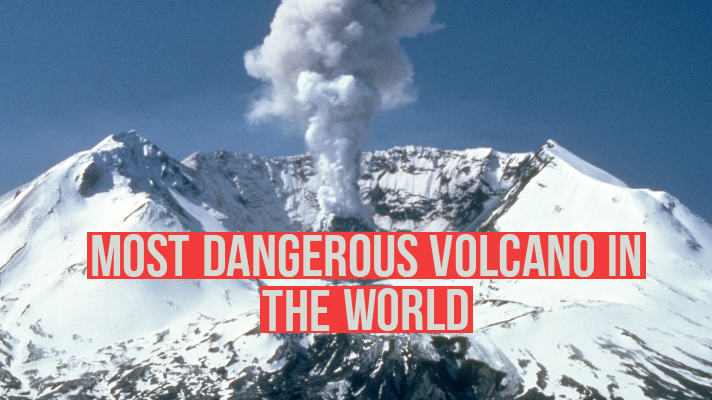Dangerous volcano in the world
volcano in the world
Yellowstone Caldera volcano is at least 2 million years old and has been dormant for approximately 640,000 years. There are more than 500 active volcanoes in the world. Mount Etna is thought to be the oldest active volcano in the world. Lava When magma erupts through the planet’s surface it is called lava. Magma Magma is molten rock within the planet’s crust.
A volcano is a geological landform, usually in the shape of a mountain. It forms the opening in Earth’s surface through which molten lava and gases erupt.
Volcanoes are of three types: active, dormant, and extinct. Mount Vesuvius, Mauna Loa, and Mount Unzen are examples of volcanoes.

Vesuvius
Naples, Italy
- Eruption August 79 CE Features Ash cloud, pyroclastic flows Estimated death toll 2,100.
Vesuvius is a stratovolcano that lies just 5 miles (8km) away from the Italian city of Naples, in the most densely populated volcanic area in the world.
Its location and its capacity for especially violent eruptions are what make it so dangerous. Its lower slopes are dotted with villages and vineyards. Destructive past Of Vesuvius’s numerous large historic eruptions, the most infamous occurred in 79 CE.
During the explosion, falls of volcanic ash and pyroclastic surges buried the towns of Pompeii and Herculaneum, killing about 2,100 people.
Another enormous volcanic blast in 1631 killed more than 3,000 people, while an eruption in 1906 killed more than 200. There has been no eruption since 1944, suggesting that a large explosion is overdue.

Popocatépetl
Maxico
Towering to a height of 18,491ft (5,636m), Popocatépetl, which means “smoking mountain” in the ancient Aztec language, is famous because of the ferocity of its eruptions, its tongue-twisting name, and its proximity to Greater Mexico City, the largest metropolitan area in the Americas.
Violent nature
A stratovolcano, Popocatépetl, or “El Popo,” can be seen erupting from most parts of Mexico City.
Over the past few thousand years, it has had three Plinian eruptions extremely violent blasts that produce huge plumes of gas and ash.
Such explosions can cause large loss of life in populated areas. After a massive eruption in 1947, the volcano lay dormant until it came back to life in 1994.
The year 2000 saw the most dramatic eruption in more than a thousand years.
Ever since, smoke has been seen emanating almost daily from its huge summit crater.
In April 2016, it erupted again, spewing out lava, ash, and rock, and it has continued to produce powerful explosions at irregular intervals.
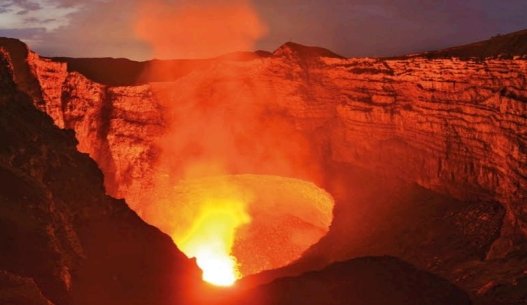
Mayon Volcano
Philippines
Rising 8,077 ft (2,462 m) above the Abay Gulf, this stratovolcano is considered to be one of the most perfectly symmetrical in the world.
Location In the south of the island of Luzon, the Philippines This is the most active volcano in the Philippines, having erupted at least 49 times in the last 400 years.
Mayon’s most violent eruption, in 1814, killed over 1,200 people and ended up devastating several towns.
Following another eruption in 2006, heavy typhoon rainfall produced lahars (mudflows) from the recently deposited ash, which killed at least 1,000 people.
Also Read : 10- Amazing Facts About world billionaires

Mount St Helens
Us
- The volcano reawakened in March 1980 with a series of tremors and a growing bulge on its north side.
Mount St Helens blew off its summit in May 1980 with the energy of 20,000 Hiroshima-size atomic bombs.
The resulting rock blast and mudslides killed 57 people and around 7,000 large animals, engulfed 200 houses, choked rivers, buried highways and flattened trees like matchsticks.
The damage cost $1.1 billion to repair. The volcano remains active and America’s second-most dangerous.
Ash closed nearby airports for up to two weeks, grounding thousands of flights.
It sits on the Ring of Fire a 40,000-kilometre (25,000-mile) horseshoe of volcanoes circling the Pacific Ocean.
Beneath Mount St Helens, two of the massive rock plates that form the Earth’s crust are colliding; the oceanic Juan de Fuca Plate is sliding beneath the continental North American Plate. As the ocean plate grinds down into the Earth’s crust, water is released.
The water helps to melt the overlying hot rock into magma, which erupts through the brittle crust.
The old North American crust contains lots of silica, which makes the magma sticky. Gas builds up in this thick magma until it violently erupts with gas, rock and steam.
This debris piles up into steep-sided volcanoes. Before the 1980 eruption, Mount St Helens was 3,000 metres (1,000 feet) tall and had been dormant since 1857.
A week before the eruption, the bulge grew two metres (6.6 feet) daily. After the eruption, Mount St Helens had shrunk by about 400 metres (1,300 feet).

Mount Merapi
Indonesia
- Merapi rises 9,738 ft (2,968 m), somewhat lower than before its 2010 eruption, which killed more than 300 people living on its slopes.
Location On the island of Java, Indonesia This stratovolcano is the most energetic of Indonesia’s 129 active volcanoes, and forms part of the Pacific Ring of Fire. It has erupted regularly in the last 500 years, causing many fatalities.
The volcano is situated over a subduction zone where the Indo-Australian Plate is pushing under the Sunda Plate.

Volcán de Colima
North America
- With 300,000 people living nearby, it is one of the most dangerous volcanoes on the continent.
Location Mostly in the state of Jalisco, west central Mexico This massive stratovolcano is one of the most active in North America, having erupted more than 40 times since 1576, most in 2017. Eruptions produce flows of viscous lava, explosions of pyroclastic material, and enormous ash clouds.
Volcán de Colima’s summit rises 12,631 ft (3,850 m) above sea level.

Mount Pinatubo
Philippines
Eruption June 1991 Features Ash cloud, pyroclastic flows, mudslides Estimated death toll 800 The 1991 eruption of Mount Pinatubo blew the top off the volcano and ejected about 2.4 cubic miles (10 cubic km) of ash and rock into the air.
This caused a colossal ash cloud and deadly pyroclastic flows. Fine ash smothered the landscape, and created a layer of sulfuric acid haze all around the world.
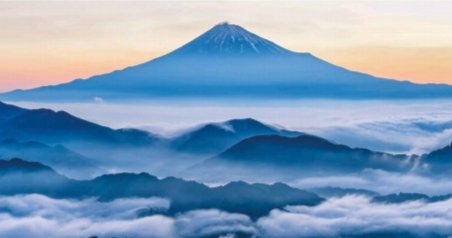
Mount Fuji
Tokyo
- Although it is classified as an active volcano, Fuji’s last eruption which covered a huge area to its east in ash was in December 1707.
Rising to a height of 12,388ft (3,776m), and located 55 miles (90km) southwest of Tokyo, Mount Fuji is the highest mountain in Japan.
Mostly formed 11,000–8,000 years ago, its attractive cone is one of the country’s most famous symbols, often celebrated in art and literature, as well as visited by sightseers and climbers.
Since then, there have been no further signs of volcanic activity. E. Asia Mount Fuji An iconic, beautifully symmetrical volcano that can be seen from Tokyo on a clear day.

Yellowstone
America
- Considered the world’s largest intact ecosystem in the northern temperate region, Yellowstone is home to many large mammals such as American bison, wolves, black and grizzly bears, and moose.
America’s oldest national park, Yellowstone covers nearly 3,500 square miles (9,000 square km) of forest, grassland, mountains, lakes, and canyons. It contains the greatest concentration of geothermal features in the world, including geysers, colorful hot springs, and mud pools.
Heat supply Yellowstone’s geothermal activity results from the fact that part of the area rests above a huge underground chamber of magma, which serves as a constant heat source
The features are arranged in distinct areas called geyser basins. Upper Geyser Basin contains around 150 geysers, including the famous Old Faithful, and several colorful springs. Many of the geysers erupt more than 100 ft (30m) into the air.
Plentiful rainfall seeps through Earth’s crust and is heated by the magma chamber, providing a continuous hot water supply for the springs and geysers. Geological diversity Rugged mountain scenery, deep glacier-carved valleys, waterfalls, canyons, and rich wildlife are among other interesting features of Yellowstone.
The Grand Canyon of Yellowstone, as well as two waterfalls on the Yellowstone River, constitute some of its most dramatic attractions.

Mount Pelée
West Indies
Mount Pelée Martinique, West Indies Eruption May 1902 Features Ash cloud, pyroclastic flows Estimated death toll 29,500 The city of Saint-Pierre below Mount Pelée was crowded with people when the volcano exploded and a vast cloud of ash poured out.
After many years of inactivity, in 1902 it produced the most devastating eruption of the 20th century in terms of casualties.
The cloud became a pyroclastic flow that surged toward Saint-Pierre at more than 400 mph (650 km/h), reaching the city in under a minute and completely destroying it. Virtually everyone was killed.
Location Martinique in the Lesser Antilles, Caribbean Sea Pelée is a stratovolcano (composite volcano) in the Antilles island arc.
A series of pyroclastic clouds swept down its slopes to destroy the city of Saint- Pierre, killing about 30,000 people. The Peléan type of eruption, characterized by explosive.
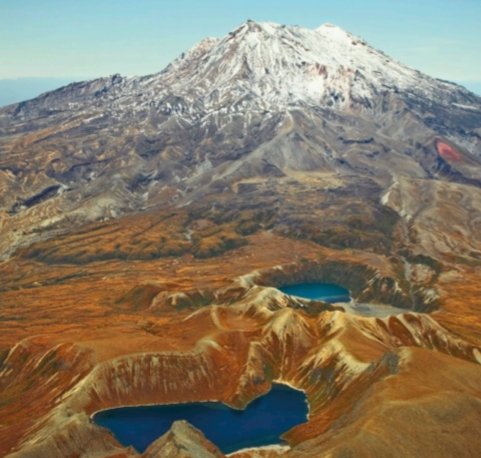
Ruapehu
New Zealand
Ruapehu Location North Island, New Zealand New Zealand’s largest active volcano, and North Island’s tallest mountain, Ruapehu has three peaks surrounding a crater, which becomes a crater lake between eruptions.
One feature of Ruapehu eruptions has been the breaching of the lake dam and the creation of destructive lahars (mudflows) as water mixes with volcanic sediments and speeds downslope.
A lahar in 1953 killed 151 people. The last major eruption was in 1995, although there have been smaller events since.
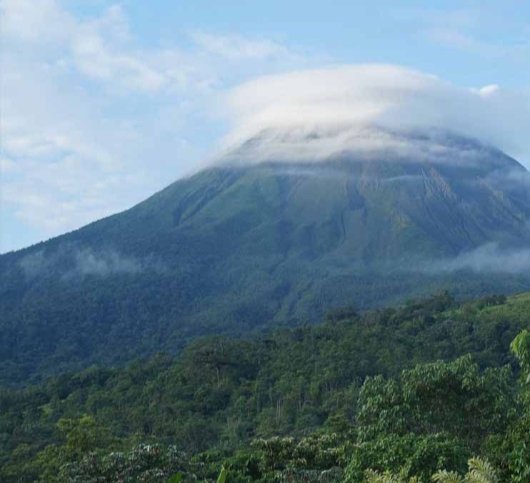
Arenal
Northwest Costa Rica
Location Northwest Costa Rica, Central America Arenal is Costa Rica’s youngest and most active volcano.
Situated over an active subduction zone where the Cocos Plate pushes beneath the Caribbean Plate, this stratovolcano was dormant for hundreds of years before July 1968, when an unexpected and violent eruption destroyed three small towns.
Rocks weighing several tons were blasted more than 0.6 mile (1 km) away. Seven more eruptions occurred over the next 30 years, but the volcano was declared dormant again in 2010.

Galeras
Southwest Colombia
Location Southwest Colombia, northern Andes Colombia’s most active volcano is also potentially its most dangerous, being situated near the city of Pasto’s 450,000 inhabitants.
It is a large stratovolcano, with a peak that is 14,029ft (4,276m) above sea level. The area’s volcanism dates back at least 1 million years, with a particularly massive eruption 560,000 years ago.
This activity results from the oceanic Nazca Plate plunging beneath the continental crust of the North Andes block.

Ojos del Salado
Chile–Argentina
Location Central Chile–Argentina border, southern Andes This snow-covered stratovolcano has several claims to fame.
At 22,615 ft (6,893 m), it is the highest active volcano in the world and the second highest peak of any description in the Americas.
A small caldera not far from the summit is probably the highest lake on Earth.
Although there are persistent fumaroles on the volcano, and a gas emission was reported in 1993, the last major eruption took place 1,000–1,500 years ago.

